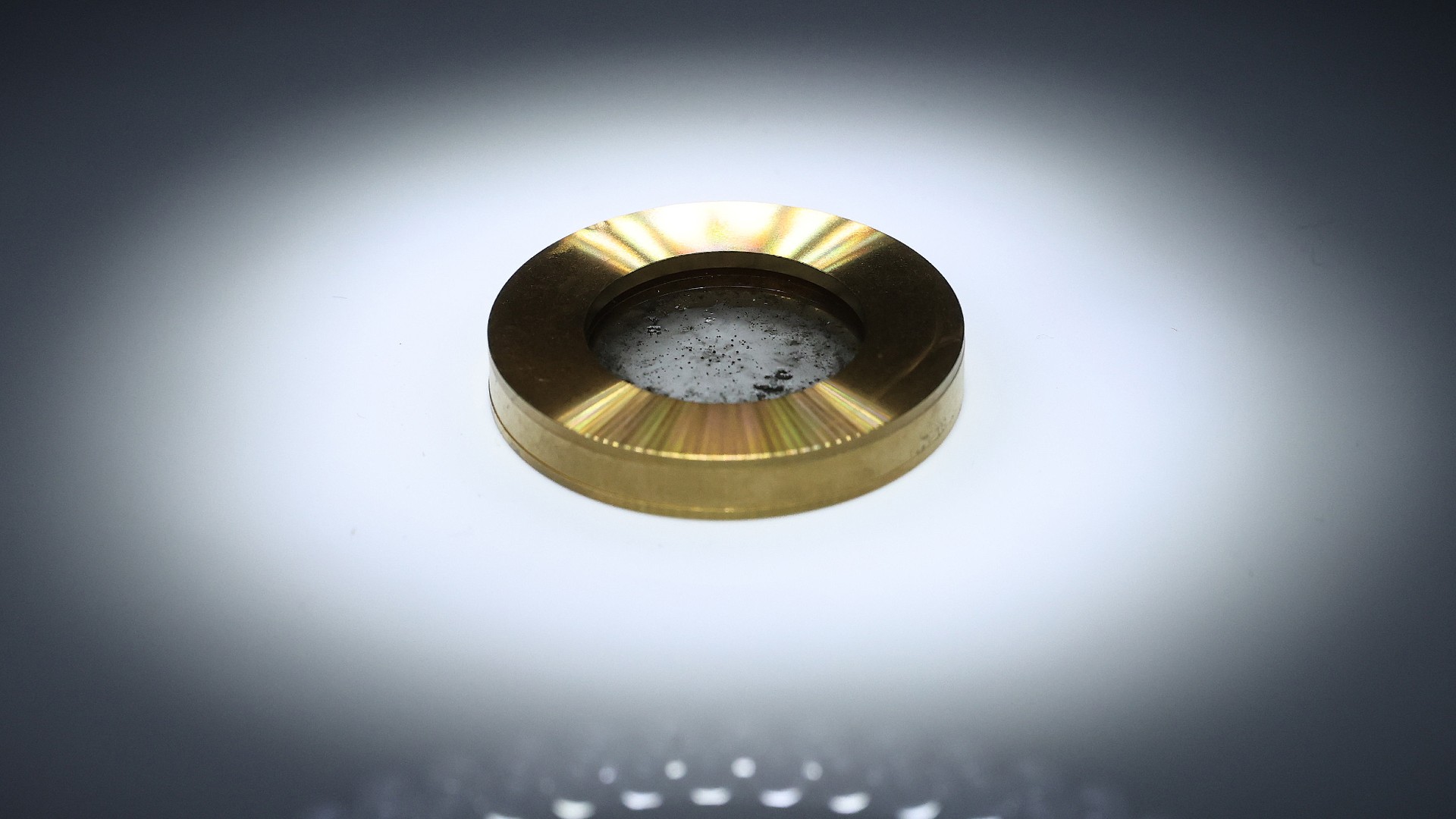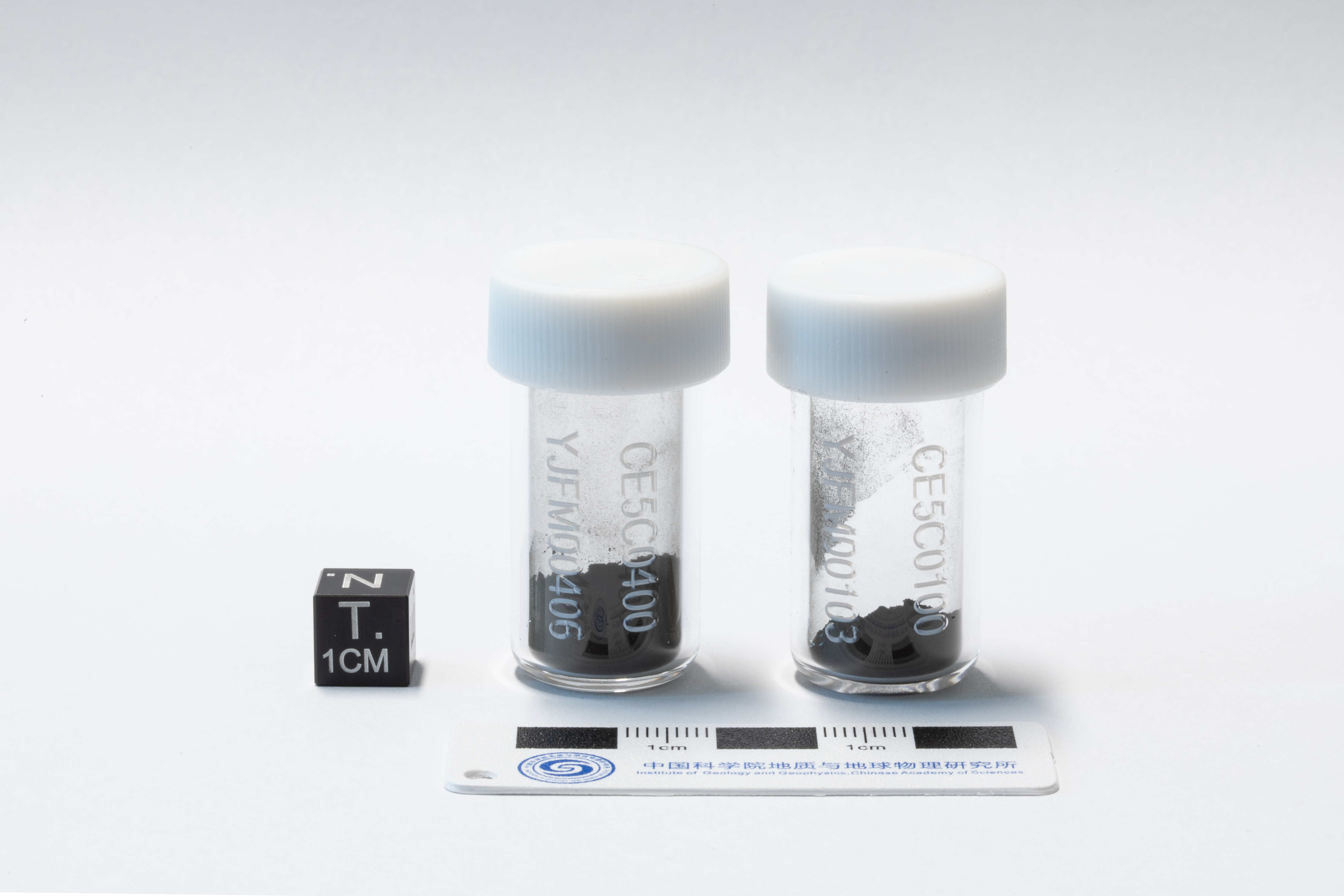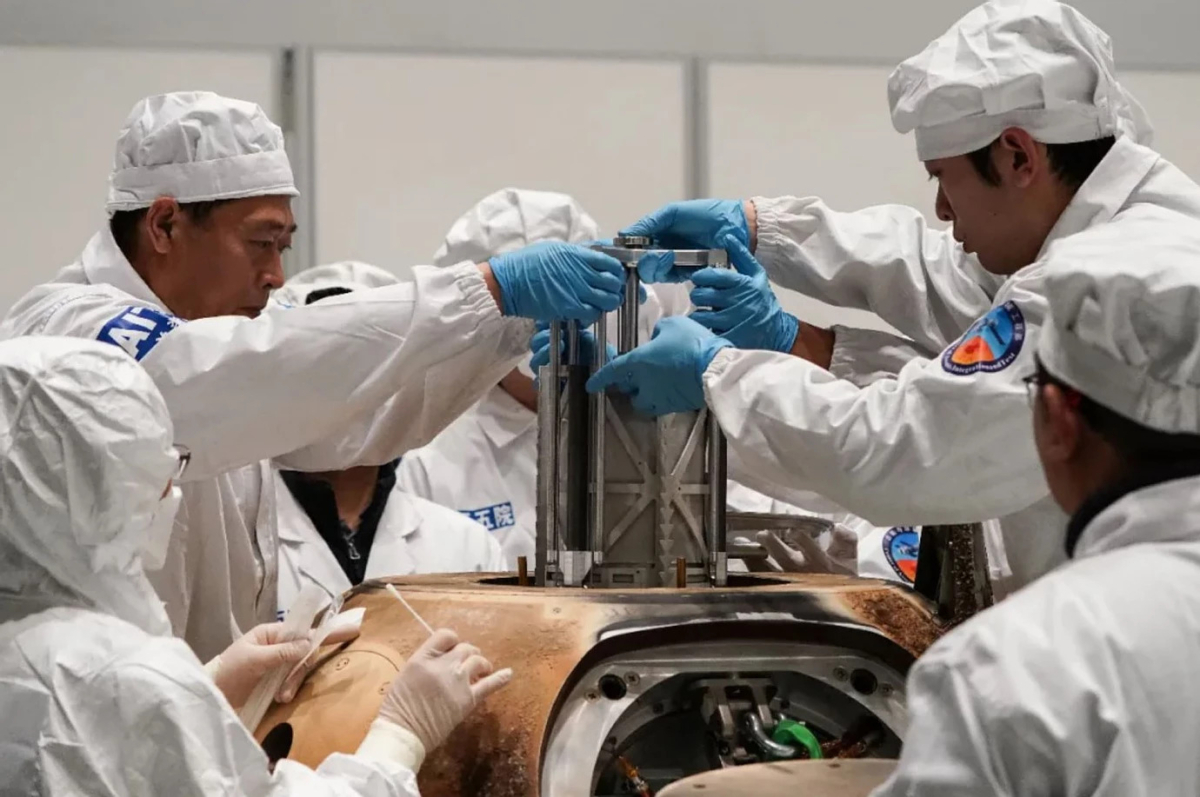China's Chang'e 5 moon samples, beyond NASA's reach for years, are finally available to US scientists
For the first time, NASA-funded researchers can apply for access to lunar samples collected by China's Chang'e-5 mission.

NASA has greenlit space agency-funded researchers to apply for access to China's lunar samples returned to Earth via that country's Chang'e-5 moon mission.
In December 2020, China's Chang'e-5 lunar mission rocketed back to Earth 3.8 pounds (1,731 grams) of lunar rocks and soil from its Oceanus Procellarum exploration site on the near side of the moon.
More recently, China has made those samples available to researchers from countries. The China National Space Administration (CNSA) is now orchestrating the 7th round of receiving applications for access to Chang'e-5 lunar samples, an opportunity that is open until Dec. 22 of this year.
Now, in a statement from the NASA Solicitation and Proposal Integrated Review and Evaluation System (NSPIRES) the space agency has certified its intent to Congress to allow NASA-funded researchers to apply for access to the Chang'e-5 samples.
"The Chang'e-5 samples originate from regions of the moon not yet sampled by NASA and are expected to provide valuable new scientific insight on the geological history of the moon, which could provide new understanding of the Earth-moon system and potentially inform NASA's future lunar exploration plans," the statement adds. "Applying for samples will ensure that United States researchers have the same research opportunities as scientists around the world."
Related: China makes Chang'e 5 moon samples open to international researchers
Application portal
The CNSA application portal opened on Nov. 6, and does not close until Dec 22. NASA researchers only gained approval to submit applications on Nov. 29, NASA spokesperson Roxana Bardan, told Space.com.
Get the Space.com Newsletter
Breaking space news, the latest updates on rocket launches, skywatching events and more!
If a NASA-funded researcher's application is selected, NASA should be informed for guidance on next steps, the NASA statement adds. "At this moment, we do not have information about what the post-selection guidance will entail," Bardan said.
In the NSPIRES statement, the new allowance applies specifically to Chang'e-5 mission samples, adding that "the normal prohibition on bilateral activity with PRC [People's Republic of China] on NASA funded projects remains in place," says the statement.

Wolf amendment
There is a U.S. law in place known as the Wolf amendment that bans cooperation between the U.S. space agency NASA and Chinese government entities.
Originally sponsored by now-retired Rep. Frank Wolf (R-VA) when he chaired the House Appropriations Commerce-Justice-Science subcommittee that funds NASA, the amendment was sparked by China's human rights abuses, theft of U.S. intellectual property, and other geopolitical issues.
"The Wolf Amendment is not a total prohibition on cooperation, but NASA must get congressional permission first and satisfy a number of conditions. The language is routinely included in NASA's annual appropriations bills," observes Marcia Smith, editor of the informative SpacePolicyOnline.com.
Science diplomacy
Meanwhile, U.S. moon researchers are delighted to learn of the NASA go-ahead.
"This is excellent news as it allows U.S.-based scientists to bring their expertise to investigating these unique lunar samples," said Clive Neal, a leading expert on the moon at the University of Notre Dame in Indiana. "While a few U.S. scientists were lucky enough to interpret the initial age data from the young basalts contained in the Chang'e-5 sample return and be involved in some of the first publications, this is the first time we have been allowed access to the actual samples," he told Space.com.
Neal said that he salutes NASA for making this access to China's lunar specimens possible. "I hope that this will lead to a sample exchange between the U.S. and China, which was done several times between the U.S. and the Soviet Union during the Cold War," he said.
Such sample exchanges led to a thawing of relations through "science diplomacy," Neal said, "and this is an amazing start."

New opportunity
"I think it's wonderful to see this new opportunity opened to U.S. scientists," said Lisa Gaddis, Director of the Lunar and Planetary Institute under the Universities Space Research Association. "This opens the door to new collaborations and likely new results that shed light on the origin of some of the youngest volcanic materials sampled on the moon."
The Chang'e-5 samples are from a previously unsampled lunar region in the northern Oceanus Procellarum, nears Mons Rumker, Gaddis said. Some of the most recent (youngest) lunar basalts are observed there, "so understanding their ages helps to understand how lunar volcanism changed over time."
In particular, Gaddis said that the Chang'e-5 lunar samples have already raised questions about the moon's thermal and magmatic evolution, especially how lunar interior remained hot enough to support volcanism so recently.
Lunar puzzle
Equally heartened by enhanced research access to the Chinese lunar specimens is James Head at Brown University in Rhode Island, a veteran lunar scientist that worked on the Apollo moon program.
"The Chang'e-5 mission has provided an important missing piece of the lunar puzzle by returning samples from the northwest nearside Oceanus Procellarum, on one of the youngest un-sampled lava flow units on the moon," Head said. "Chinese investigators have provided an important framework for further investigation to be carried out in this next phase of analysis," he told Space.com.
"I hope that this new development by NASA will pave the way for more international sample exchange in the future as the United States, China, and other agencies return additional samples from the moon, Mars, asteroids and comets," Head said. "The solar system is a big place, and planetary science can benefit tremendously from complementary, non-duplicative exploration destinations, and the sharing of samples and other results."
Far side samples
In the meantime, China moon exploration planners are detailing the country's next robotic lunar probe mission, Chang'e-6, to be launched around 2024. This moon lander is to set down in the south pole-Aitken Basin on the lunar far side and gather samples, then rocket those specimens to Earth.
Similar to the successful Chang'e-5 return sample probe, Chang'e-6 will consist of four components: An orbiter, lander, ascender and Earth re-entry module.
Chang'e-6 will seek to retrieve one to two kilograms (4.4 pounds) of lunar samples, according to Chinese lunar experts. If successful, Chang'e-6 would mark the first returned samples from the moon's far side.
Join our Space Forums to keep talking space on the latest missions, night sky and more! And if you have a news tip, correction or comment, let us know at: community@space.com.

Leonard David is an award-winning space journalist who has been reporting on space activities for more than 50 years. Currently writing as Space.com's Space Insider Columnist among his other projects, Leonard has authored numerous books on space exploration, Mars missions and more, with his latest being "Moon Rush: The New Space Race" published in 2019 by National Geographic. He also wrote "Mars: Our Future on the Red Planet" released in 2016 by National Geographic. Leonard has served as a correspondent for SpaceNews, Scientific American and Aerospace America for the AIAA. He has received many awards, including the first Ordway Award for Sustained Excellence in Spaceflight History in 2015 at the AAS Wernher von Braun Memorial Symposium. You can find out Leonard's latest project at his website and on Twitter.









